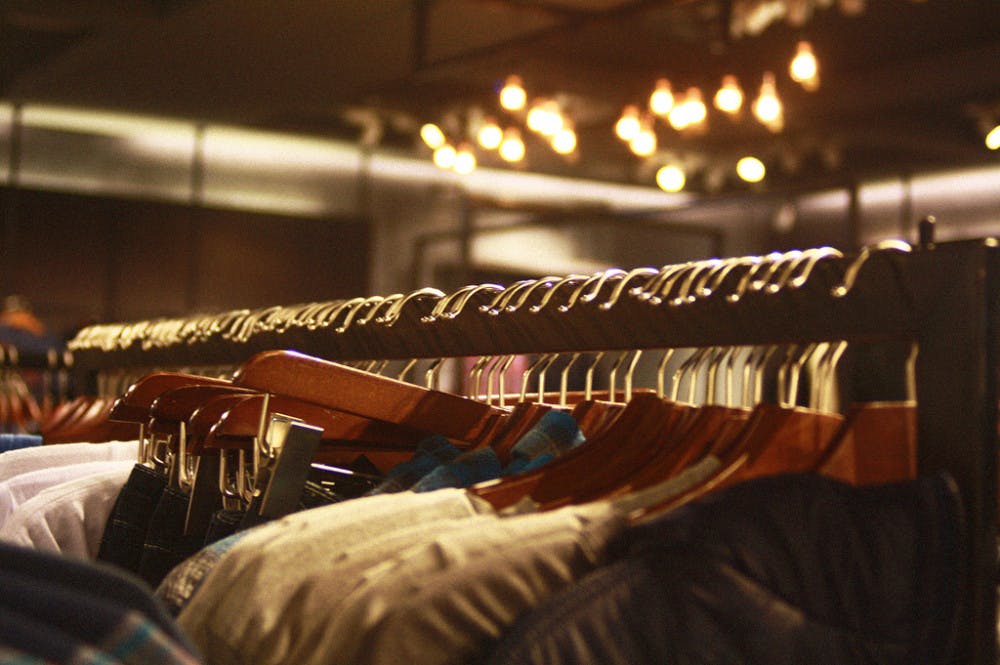By Alison Treen
Three years ago, H&M’s factory in Bangladesh collapsed, killing over 1,000 workers. Zara has been found using slave labor and Forever 21 has been condemned for slave-like conditions in its factories. Workers in a Gap sweatshop in Bangladesh put in 100 hours per week for less than 25 cents per hour (“Who’s Paying for our Cheap Clothes?”).
Yet despite this, these brands are not only reaping in profits—they’re growing, thanks to the fast fashion movement; a trend where clothes are produced at a quick turnover rate for a cheap price. Like fast food, fast fashion has one goal: efficiency. Clothing brands that used to create just two collections a year (spring/summer and autumn/winter) are facing pressure from lower-end chains that churn out new looks every week.
The turnaround then increases for factory workers, who now only have a few days to create the trendy looks, which will likely end up landfills in a matter of months. This, in turn creates environmental problems, as synthetic materials don’t decompose since they are made of plastic, and wool releases methane, contributing to global warming.
Most of us are blinded by the price tags, however. With these cheap clothes we can drop the same amount of cash on three to four times as many shirts and dresses as we could at a higher-end store. Then once the seams rip a few weeks later or the buttons pop off, we go back and buy more because it’s so inexpensive; and this becomes a vicious cycle.
But behind the $17 jeans and super-sale $4 t-shirts, there are poor laborers working in sweatshops in underdeveloped nations for 16 hours a day. Of course, nobody thinks of this when they stroll into a Forever 21 looking for a new wardrobe, myself included. We don’t know where our clothing comes from other than the country’s name printed on the tag, and most of us don’t really care—we’re just happy to land a bargain. But according to Elizabeth Cline, author of Overdressed: The Shockingly High Price of Cheap Fashion, “Less than 10% of what we’re wearing…was made in factories where people were paid a living wage and working in safe and legal conditions.”
Some brands seem to combat this tragedy; in fact, the very leaders of fast-fashion production argue that they defend human and environmental rights. H&M has an entire sustainability page on its website, discussing everything from child labor and social responsibility to waste and recycling. It even has a collection, the Conscious Line, that has celebrity endorsements and boasts its sustainable origins.
According to Shannon Whitehead of The Huffington Post, however, it’s not that simple. In her article, “H&M’s ‘Conscious’ Collection? Don’t Buy Into the Hype”, Whitehead explains how when she went in search of the collection, the store manager didn’t even know what it was. She also brings up the company’s 2014 sustainability report, which addresses preserving resources but focuses on its growth—which is contradictory if H&M continues to do business the way it does.
So how do you know what is really sustainable?
Well, you can be like Emma Watson and wear a custom, reusable Calvin Klein/Eco-Age gown made from recycled plastic bottles. (Worn at the 2016 Met Gala; Watson says she plans to re-wear the pieces, which can separate into pants, a train, bustier, at least 30 times.)
For those of us who live outside the realm of custom clothing, though, shopping at eco- and socially-conscious brands another good start. This clothing may be more expensive on the front line, but like most sustainable options pays off in the long run when they don’t rip after the third wear. Lines such as Krochet Kids, Fair Trade Winds, Nisolo, and Indigenous Clothing are some examples of fashionable, fair trade clothing companies.
This fast-fashion fad isn’t going to fade away quickly, but like Kelsey Timmerman said in his lecture on fair trade at Miami last year, small steps are what really matter.
Fighting Fast Fashion

